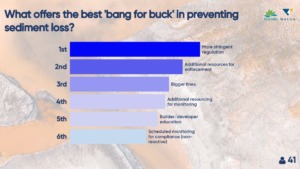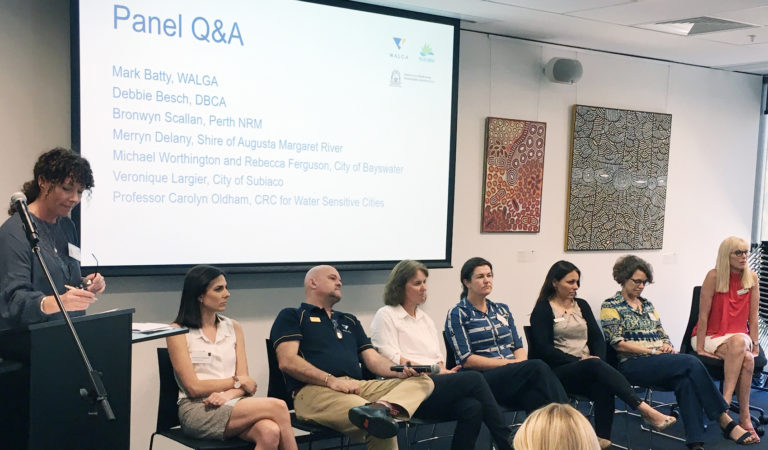Perth NRM recently worked with State and local government agencies to present a workshop highlighting the need for improved management of urban development sites
to prevent sediment and other materials entering storm drains, causing significant environmental impacts on our waterways and additional costs to councils and residents.
Presented by Perth NRM, WALGA, the Department of Biodiversity, Conservation & Attractions (DBCA) and Urbaqua, the workshop brought together almost 50 stakeholders from diverse backgrounds including building and planning services, consultancy, engineering, asset management, environmental health, verge control, environment, parks, and catchment management.
The work of the Sediment Taskforce has raised some important issues over the course of the last year, including case studies that have seen local councils start to measure the impacts of sediment loss and the hidden costs of remediating waterways and maintaining drainage infrastructure.
Local governments have identified a need for consistent regulation, monitoring and enforcement of building sites, particularly with regard to the increasing numbers of subdivision developments, as the mismanagement of sediment and other contaminants is often discovered after it reaches a visible waterway. This makes it difficult to identify the point of origin, without which enforcement and site management strategies can not be implemented.
The workshop provided information on the role of Local Government in managing sediment loss during development and the tools, resources and actions proposed by the Sediment Task Force to assist Local Governments in managing the environmental and financial impacts of sediment loss. Key preliminary findings of the University of WA’s research Quantifying export rates of sediment for a range of construction activities in Perth was also provided.
Local examples of effective management of this issue were conveyed, with the City of Bayswater sharing how it facilitates cooperation from builders and developers; the City of Subiaco presenting their approach to remediating environmental degradation caused by sedimentation; and the Shire of Augusta Margaret River revealed their new strategic approach to managing urban development to protect their local waterways.

A real-time participant poll aimed at identifying critical issues and solutions for managing sediment loss and a panel discussion were also features of the workshop.
Feedback from participants confirmed the presentations provided inspirational and valuable information, and provided good coverage of the issues and approaches.
Key messages from the day included:
- We cannot operate in isolation when our impacts are not isolated – sedimentation has far-reaching and significant impacts that require cooperation, sharing and support to mitigate;
- Success is evident when Local Government focuses on what is locally relevant and important;
- Local Laws can help create a more level field for the building industry as they allow sediment management to be costed as part of works;
- Do not rely on the goodwill of builders and developers, but proactively assist with training and the use of enforcement where necessary;
- Engage the community as a resource to assist with monitoring and reporting of breaches in sediment management (e.g. NeatStreets app); and
- It is critical to ensure submissions to the upcoming review of the Better Urban Water Management Guidelines (WAPC, 2008) highlight sediment control.
Download the results from the workshop poll here.
All the speaker presentations are hosted at the WALGA website. (20/11/19)

